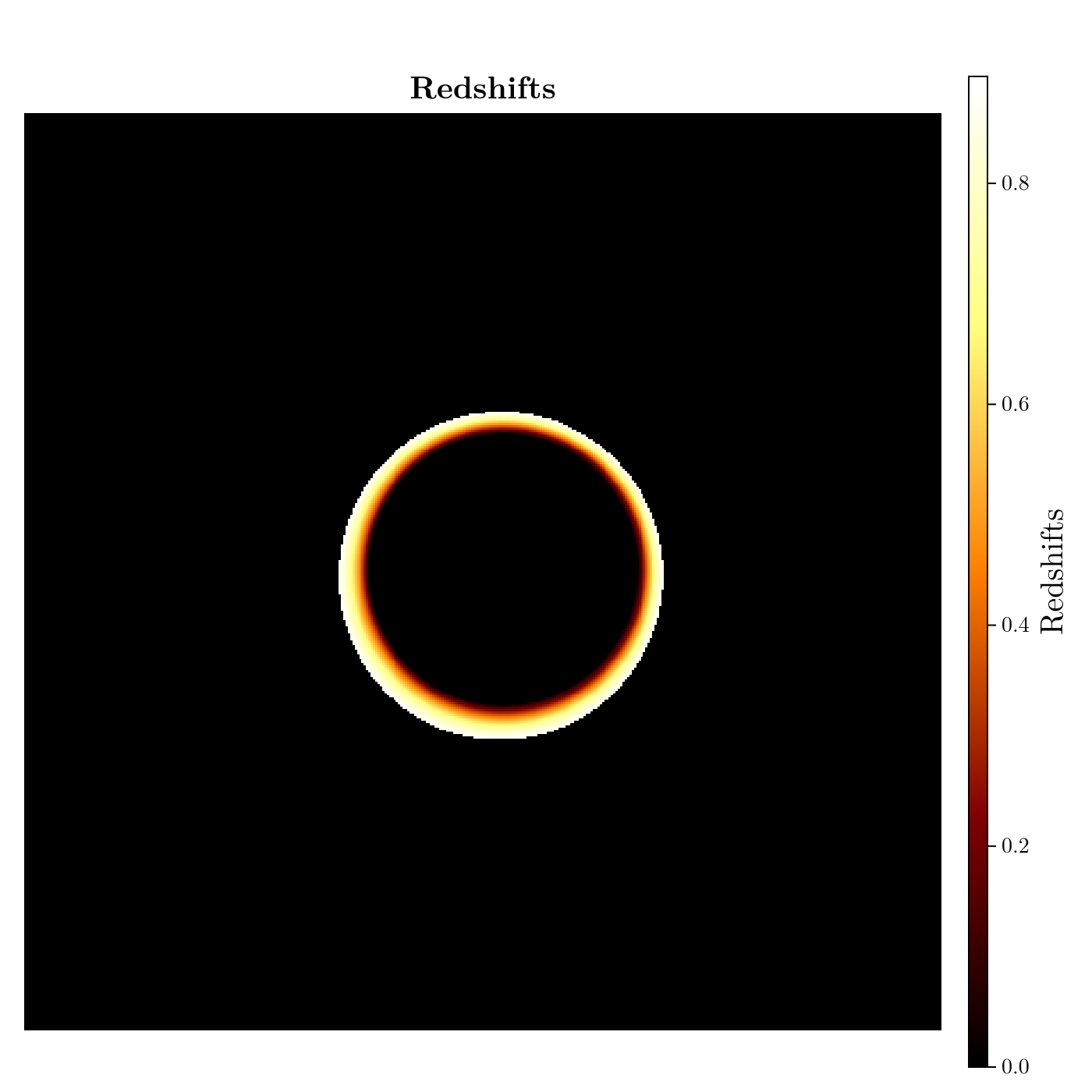Defining a Custom Material and Saving Output
We will define a redshift material for raytracing, and export the raytraced quantities to a .npy file.
using KrangMaterials should be functors (i.e. types with callable objects). Our material will raytrace the redshifts associated with a zero angular momentum observer (ZAMO) on a cone for a given sub-image. If the cone is self obscuring, then only the redshift on the side that is closest to the observer will be raytraced.
struct ZAMORedshifts{T} <: Krang.AbstractMaterial
n::Int
rmin::T
rmax::T
endDefine the function for the material. This functor will take in a pixel and a geometry and return the redshift associated with a given sub image. You must include the relevant physics in the functor definition. Here we will include redshift effects associated with a zero angular momentum observer (ZAMO).
function (m::ZAMORedshifts)(pix::Krang.AbstractPixel, geometry::Krang.ConeGeometry{T,A}) where {T,A}
observation = zero(T)
α,β = Krang.screen_coordinate(pix)
θs = geometry.opening_angle
isindir = false
for _ in 1:2
isindir ⊻= true
rs, νr, νθ, _, issuccess = emission_radius(pix, geometry.opening_angle, isindir, m.n)
if issuccess && m.rmin ≤ rs < m.rmax
ηtemp = η(metric, α, β, θo)
λtemp = λ(metric, α, θo)
curr_p_bl_d = p_bl_d(metric, rs, θs, ηtemp, λtemp, νr, νθ)
curr_p_bl_u = metric_uu(metric, rs, θs) * curr_p_bl_d
p_zamo_u = jac_zamo_u_bl_d(metric, rs, θs) * curr_p_bl_u
redshift = inv(p_zamo_u[1])
observation = max(redshift, eps(T))
end
end
return observation
endWe will use a
metric = Krang.Kerr(0.99);
θo = 17 * π / 180;
ρmax = 15.0;
rmin = Krang.horizon(metric); # minimum radius to truncate cone
rmax = 10.0; # maximum radius to truncate cone
n = 1; # sub-image to raytraceLet's create a camera with a resolution of 400x400 pixels and our mesh.
camera = Krang.IntensityCamera(metric, θo, -ρmax, ρmax, -ρmax, ρmax, 400);
mesh = Krang.Mesh(Krang.ConeGeometry((75 * π / 180)), ZAMORedshifts(n, rmin, rmax))
scene = Krang.Scene((mesh,))(Krang.Mesh{Krang.ConeGeometry{Float64, Nothing}, Main.var"Main".ZAMORedshifts{Float64}}(Krang.ConeGeometry{Float64, Nothing}(1.3089969389957472, nothing), Main.var"Main".ZAMORedshifts{Float64}(1, 1.141067359796659, 10.0)),)Finally, we will render the scene with the camera and plot the redshifts.
redshifts = render(camera, scene)
import CairoMakie as CMk
theme = CMk.Theme(
Axis = (
xticksvisible = false,
xticklabelsvisible = false,
yticksvisible = false,
yticklabelsvisible = false,
),
)
CMk.set_theme!(CMk.merge!(theme, CMk.theme_latexfonts()))
fig = CMk.Figure(resolution=(700, 700));
ax = CMk.Axis(fig[1, 1], title="Redshifts", titlesize=20, aspect=1)
hm = CMk.heatmap!(ax, redshifts, colormap=:afmhot)
CMk.Colorbar(fig[1, 2], hm, label="Redshifts", labelsize=20)
CMk.save("redshifts.png", fig)CairoMakie.Screen{IMAGE}
Saving the redshifts to a .npy file
using NPZ
npzwrite("redshifts_n1.npy", redshifts)This page was generated using Literate.jl.